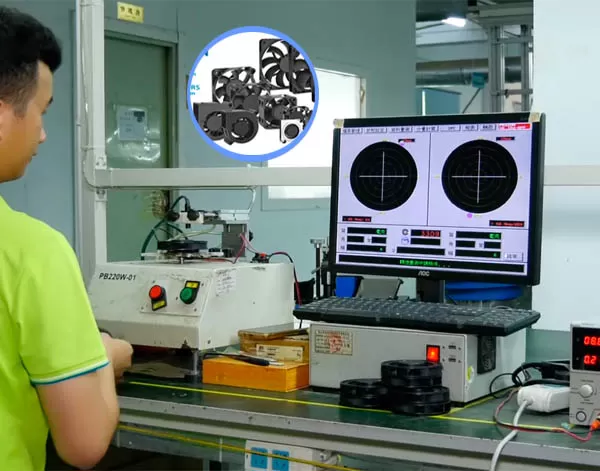Cleaning the cooling fan
Remove dust and debris: Dust and debris accumulation is a common cause of fan noise. You can use a compressed air can or a small vacuum cleaner to clean the dust and debris on the surface of the fan and between the blades. For corners that are difficult to clean, you can use a soft brush to gently brush away the dust. For example, the cooling fan in the computer case will have a layer of dust on the surface after several months of use, and the noise will often be significantly reduced after cleaning.
Clean the bearing part: If there is dirt on the bearing part of the fan, it will increase friction and generate noise. You can use a small amount of precision instrument cleaner (such as electronic cleaner), spray the cleaner on the bearing part, and then let the fan rotate a few times to make the cleaner fully work, and finally wipe off the excess cleaner.

Lubricate the bearing
Choose the right lubricant: When the fan bearing lacks lubrication, it will generate loud noise when rotating. You can use a dedicated fan lubricant or a light machine oil. For example, a lubricant containing molybdenum disulfide has good lubrication and anti-wear properties, which can effectively reduce the noise generated by the rotation of the bearing.
Proper lubrication: When lubricating, pay attention to the right amount. You can drip lubricating oil into the gap of the bearing, usually 2-3 drops. Avoid too much lubricating oil, otherwise it may cause the lubricating oil to splash and contaminate the fan blades or motor.
Check and fix the cooling fan components
Check the installation of the blades: If the fan blades are loose or deformed, it will cause the fan to run unbalanced and produce noise. Carefully check whether the blades are firmly mounted on the hub. If they are loose, you need to re-fix the blades. For deformed blades, you can try to carefully correct them back to their original shape, but be careful not to use excessive force to avoid damaging the blades.
Check the installation of the fan: Make sure the fan is firmly installed and not loose. If the fan is not firmly installed in the chassis or device, it may resonate during operation and amplify the noise. You can tighten the mounting screws or use shock pads to reduce resonance. For example, when installing a chassis fan, placing a rubber shock pad between the fan and the chassis can effectively reduce the noise caused by resonance.
Adjust cooling fan speed
Adjust through BIOS or software: For DC cooling fans in computers, you can reduce fan speed through BIOS (Basic Input Output System) settings or related fan control software. In the "Hardware Monitoring" or "Fan Control" options of BIOS, you can generally manually adjust the fan speed curve. Appropriately reducing the speed can reduce noise, but be careful not to let the device malfunction due to insufficient heat dissipation.
Use a speed regulator: If it is an independent DC cooling fan, you can use an external speed regulator to control the fan speed. The speed regulator adjusts the speed by changing the voltage input to the fan. Select the appropriate speed according to actual needs to achieve a balance between noise and heat dissipation.
Replace fan components or the entire fan
Replace bearings: If the bearings are severely worn and the noise is still loud after cleaning and lubrication, you may need to replace the bearings. This requires certain skills and tools. For some high-end fans, you may be able to purchase suitable bearings separately for replacement.
Replace fan blades: If the blades are damaged and cannot be repaired, or they still cannot operate normally after repair, you can consider replacing the fan blades. Make sure the specifications of the new blades are the same as the original blades, including size, shape, and material.
Replace the entire fan: If the fan has been in use for a long time and the noise problem cannot be solved after multiple repairs, replacing it with a new one may be the most effective solution. When choosing a new fan, you can refer to other users' reviews and choose a model with lower noise.


 +86-13528507673
+86-13528507673
 E-mail
E-mail
